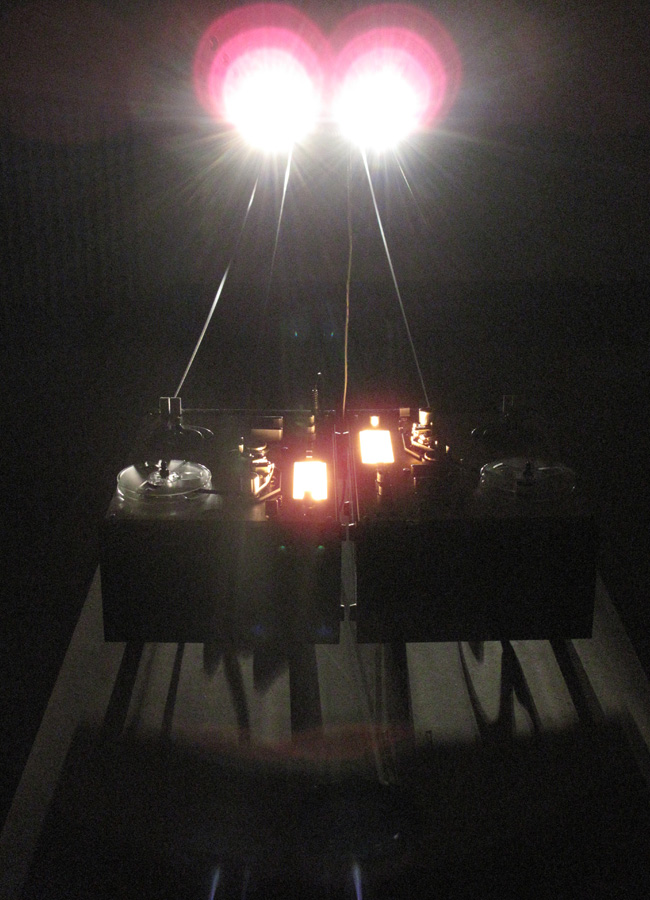
pavilion-PAVILION, image: Attila Zérczi, 2009.
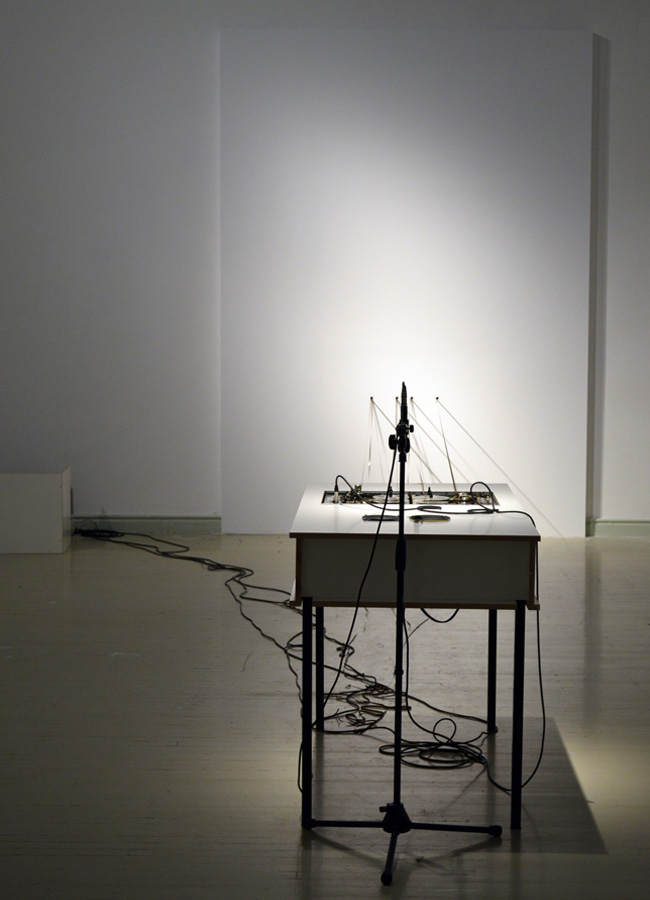
pavilion-PAVILION, 2014.
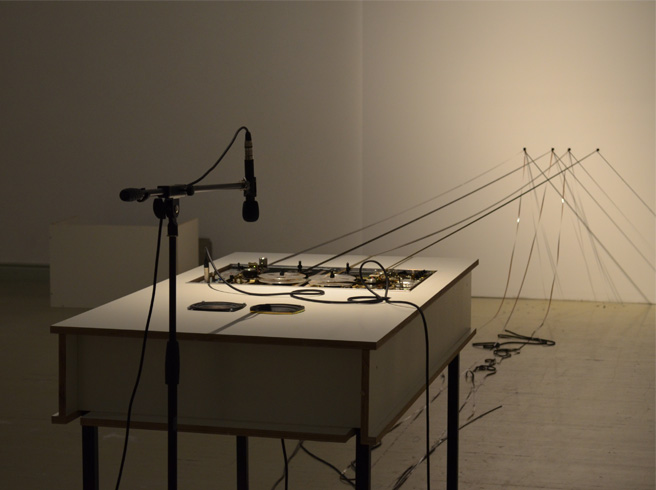
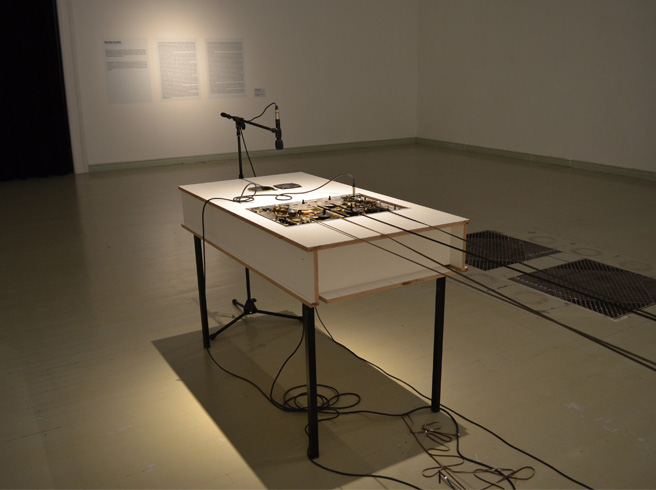
The title pavilion-PAVILION indicates the basic concept of the work, the exploration of the sound of the two differently sized rooms.
Like Alvin Lucier's work (1969), pavilion-PAVILION installation both seeks to present the phenomenon of feedback, and to represent it as a means of rearranging impressions of space.
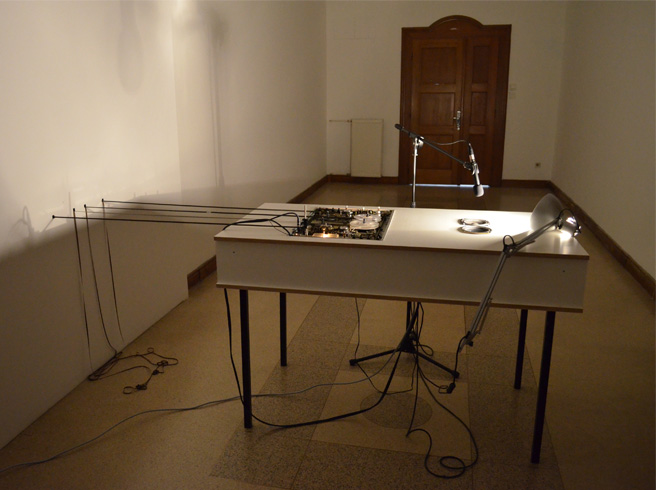

pavilion-PAVILION occuped a hall and a corridor of Műcsarnok (Kunsthalle Budapest) during the exhibition On the edge of perceptibility - Sound Art in 2014.
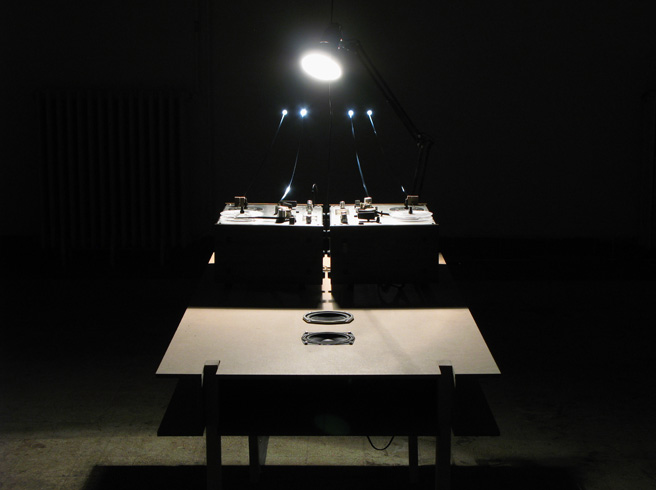
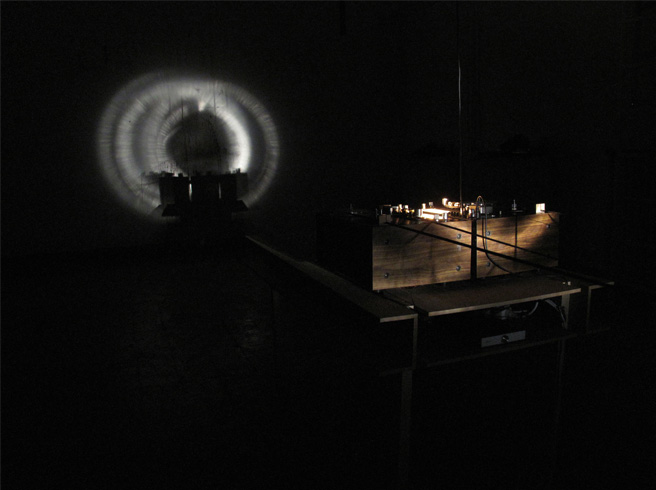
The first version of pavilion-PAVILION was originally presented in 2009 in two of those Epreskert studios of the Hungarian University of Fine Arts which were once used by sculptor Alajos Stróbl. The two, formerly communicating rooms gave home to plaster copies of antique statues, including that of the Parthenon frieze, which is still located in the same building in Budapest.
According to historic photographs, Stróbl kept changing the relative positions of the copies, therefore he allowed the works in the making to enter into new constellations of forms. Since everything was a copy – often the copy of a copy –, the statues were repeatedly transformed, creating a different overall view in every new constellation. These groupings are conspicuous parts of the photographs made of the studio, Stróbl himself must have come to appreciate their importance and made them part of his subsequent artistic practice.
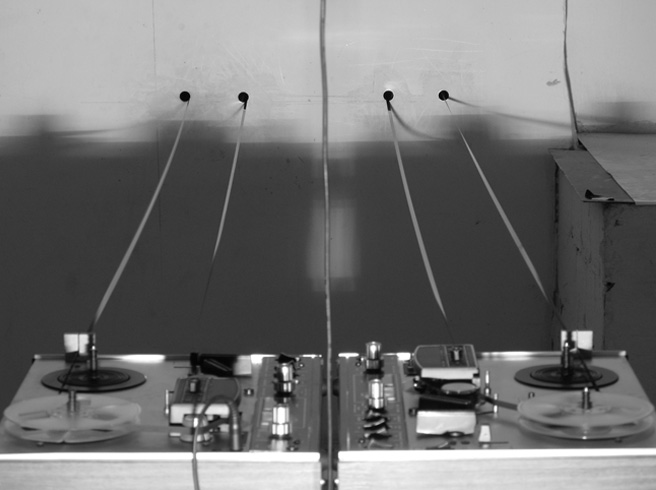
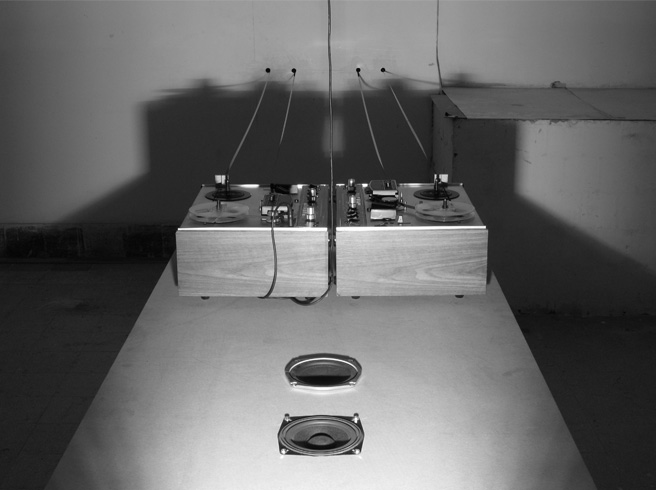
A contemporary newspaper article provides a list of the statues
then visible in the two studios: "In the hall right of the
antechamber stands a figure from the Arany monument for Nagykőrös,
the Old Sheppard, newly finished by the master, along with a bust of
Count Gyula Széchenyi. Here is Gusztáv Keletis funerary monument,
still in the making, Miklós Izsós bust, and a bear struggling with a
mouflon—a faithful likeness of the bear killed by Prince Henry of
Prussia this winter at the Betlér hunt. There is also a boars head;
the latter two statues will be items of interest at the coming
international hunting exposition of Vienna.
Another hall (smaller room of the installation) holds Justitias
seated statue in multicolour marble; this is for an exhibition in
Rome. A host of further sculptures, large and small, remind one of
the significant sculptural history of Mr Strobl, as well a the
bright prospects of his future.Working alongside him are his
students, László Vaszary, Lajos Rápolli, and Károly Székely, busy
with new works of art."
Szobrászműterem a Budapesti mesteriskolában. Huszadik Század, March
1910.